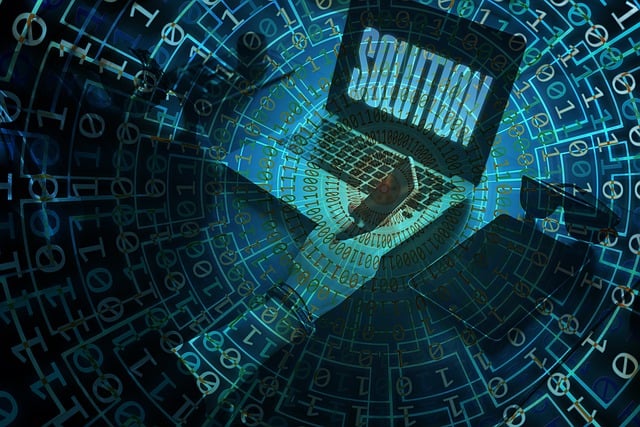Multi-Factor Authentication (MFA) enhances web-based access control by requiring three verification methods: something users know, possess, or are (like passwords, tokens, biometrics). This robust security measure significantly reduces unauthorized access and data breaches, protecting sensitive information in today's digital landscape.
Multi-factor authentication (MFA) is a game-changer in enhancing security, particularly for web-based access control. As online interactions grow, so do the risks. This article delves into the intricacies of MFA, exploring how it secures web-based access by requiring multiple verification factors. We’ll dissect different MFA types—something you know, have, or are—and guide you through implementing robust security protocols using MFA to safeguard sensitive data in today’s digital landscape.
Understanding Multi-Factor Authentication (MFA)
Multi-Factor Authentication (MFA) is a robust security measure that adds an extra layer of protection beyond traditional passwords. It involves requiring multiple forms of verification before granting access to web-based platforms and systems. This method ensures that even if a password is compromised, unauthorized users still need additional credentials to gain entry. By implementing MFA, organizations can significantly reduce the risk of cyberattacks and unauthorized data breaches.
The process typically involves something the user knows (password), something they have (a physical token or mobile device), and/or biometric data (such as fingerprints or facial recognition). This multi-layered approach makes it much harder for hackers to gain illicit access, providing a more secure web-based access control system.
How MFA Secures Web-Based Access Control
Multi-factor authentication (MFA) significantly enhances security for web-based access control by requiring more than just a password to gain entry. This additional layer involves using two or more distinct methods of verification, ensuring that even if a malicious actor obtains a user’s password, they still won’t be able to access the account without the second factor. Typically, this could include something the user knows (like a password), something they have (such as a physical token or a smartphone app), or something they are (biometric data like fingerprints or facial recognition).
By implementing MFA, organizations can mitigate risks associated with password-only authentication, where weak or reused passwords become entry points for hackers. With each additional factor, the security posture improves, making it significantly harder for unauthorized individuals to compromise web-based access control systems. This secure approach ensures that only authorized users can access sensitive data and applications, thereby safeguarding critical information in today’s digital landscape.
Types of MFA Factors: Something You Know/Have/Are
Multi-factor authentication (MFA) strengthens security by requiring multiple forms of identification before granting access to web-based access control systems. The three primary categories of MFA factors are something you know, something you have, and something you are. These factors provide a more robust defense against unauthorized access compared to single-factor authentication, which relies solely on passwords.
Something you know refers to secrets or knowledge only the legitimate user possesses, such as passphrases or answers to security questions. Something you have involves physical tokens like hardware keys or mobile app-generated codes that provide a second form of verification. Something you are leverages biometric data unique to the individual, including fingerprints, facial recognition, and iris scans, ensuring access is granted only to authorized users.
Implementing MFA for Robust Security Protocols
Implementing Multi-Factor Authentication (MFA) is a game-changer in establishing robust security protocols for any organization, especially those relying on web-based access control. It adds an extra layer of protection beyond traditional passwords, significantly reducing the risk of unauthorized access and data breaches. By requiring multiple forms of verification, such as something the user knows (password), something they have (a physical token or mobile device), or something inherent to them (biometric data), MFA ensures that even if a hacker obtains a user’s password, they still can’t gain entry without the other factors.
This enhanced security measure is crucial for protecting sensitive information and critical systems in today’s digital landscape. Organizations can safeguard their web-based platforms by integrating MFA solutions, ensuring that only authorized individuals with legitimate credentials can access valuable resources. This simple yet powerful strategy can prevent malicious activities, mitigate potential losses, and foster a secure digital environment for both employees and users.
Multi-factor authentication (MFA) is a game-changer in securing web-based access control, offering robust protocols that protect against unauthorized access. By combining something users know (passwords), have (tokens or codes), or are (biometrics), MFA creates a formidable defense against cyber threats. Implementing these measures ensures that even if one factor is compromised, the account remains safe. In today’s digital landscape, where data breaches are all too common, adopting MFA is not just recommended; it’s essential for safeguarding sensitive information and maintaining user trust.
